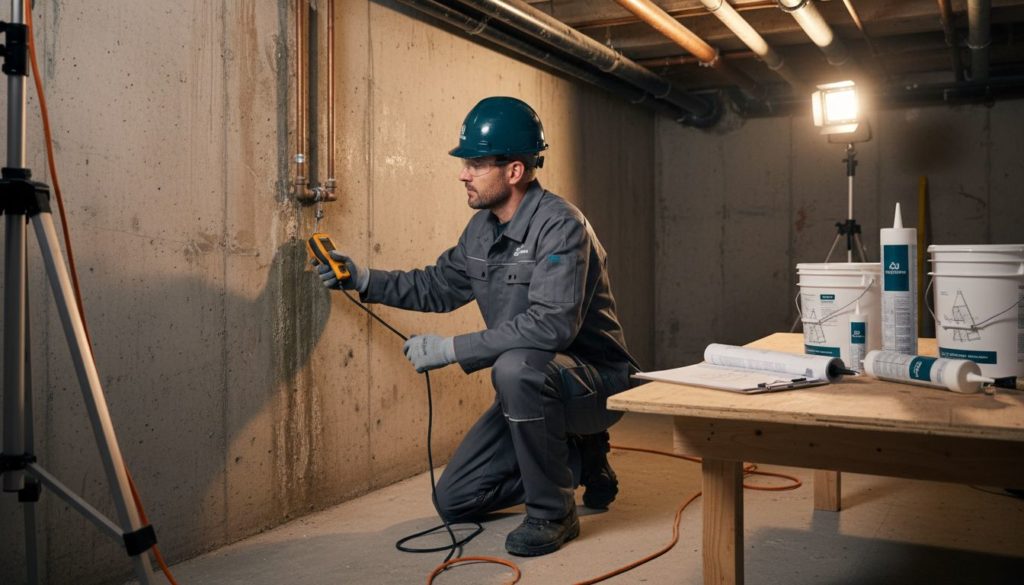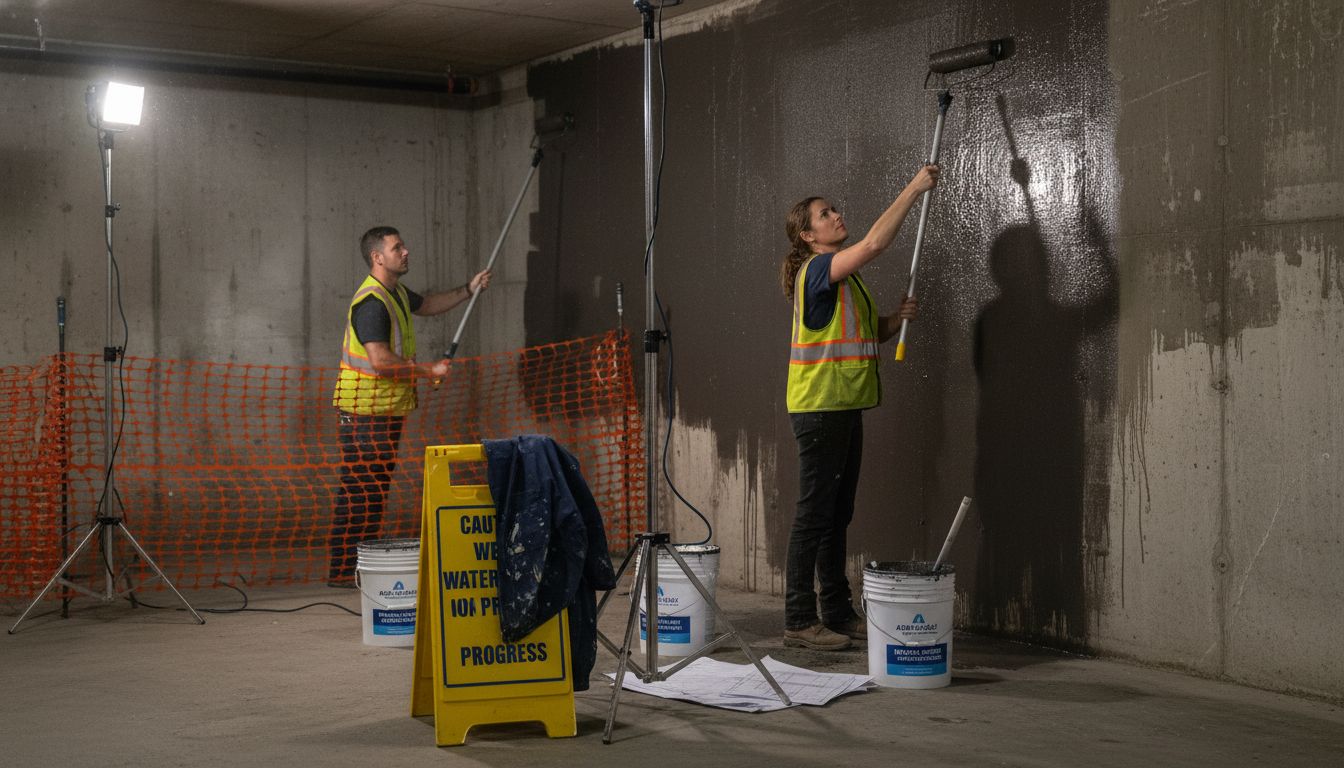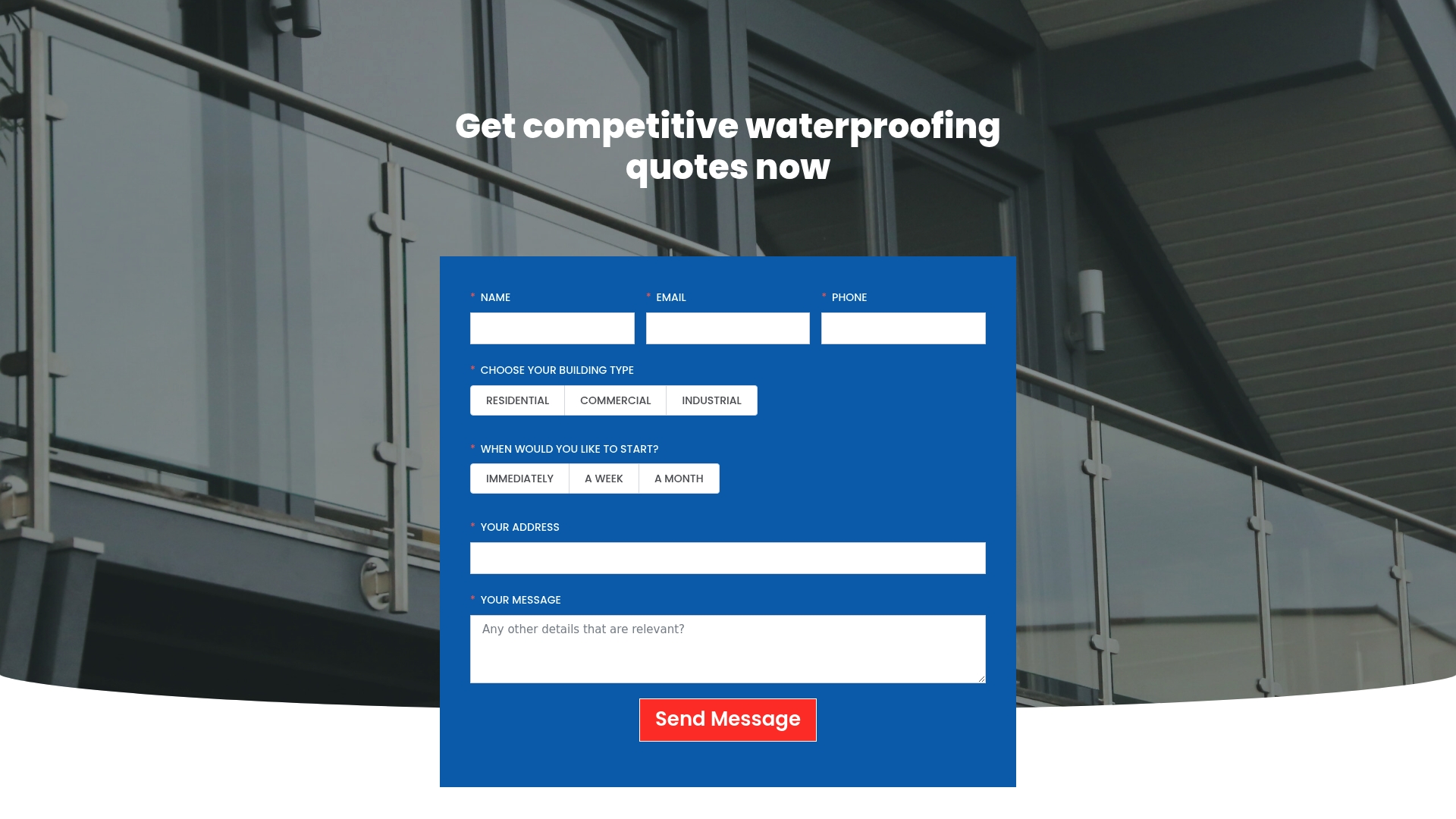Nearly 80 percent of building damage claims are linked to water intrusion, making moisture the number one threat to structures. When exterior repairs are impossible, property owners must find other ways to defend against costly leaks and hidden damage. Remedial waterproofing steps in as a practical solution for hard-to-reach places, helping homeowners protect their investment, prevent structural weakening, and avoid the heavy costs of unchecked moisture.
Table of Contents
- Defining Remedial Waterproofing And Its Purpose
- Common Causes Of Waterproofing Failures
- Key Signs Indicating Remedial Waterproofing
- Risks And Damage From Ignoring Issues
- Professional Methods And Solutions Explained
Key Takeaways
| Point | Details |
|---|---|
| Remedial Waterproofing | A solution for protecting buildings from moisture damage when external waterproofing is impractical, focusing on interior treatments. |
| Causes of Failures | Common issues include inadequate surface preparation, incorrect material selection, and poor application techniques, which undermine waterproofing effectiveness. |
| Signs of Water Damage | Look for indicators like water stains, mold growth, and blistering paint to identify the need for remedial waterproofing interventions early. |
| Consequences of Neglect | Ignoring waterproofing issues can lead to extensive structural damage and health hazards, significantly reducing property value and safety. |
Defining Remedial Waterproofing and Its Purpose
Remedial waterproofing is a targeted solution for protecting buildings from moisture damage when traditional external waterproofing methods are not possible. According to research from construction experts, this approach involves applying specialised waterproofing treatments to interior surfaces of structures where external access is limited or impractical, such as basements, underground parking areas, and enclosed spaces.
The primary purpose of remedial waterproofing is to restore and enhance a building’s protective envelope against water ingress. Water intrusion can cause significant structural damage, leading to potential foundation weakening, mould growth, and compromised building integrity. By addressing water penetration from the inside, property owners can prevent costly long-term damage and maintain the structural health of their buildings.
Key features of remedial waterproofing include:
- Targeted application on interior surfaces
- Restoration of existing waterproofing systems
- Prevention of moisture-related structural deterioration
- Cost-effective alternative to extensive external renovations
For property owners facing persistent moisture challenges, understanding the role of waterproofing in homes can provide additional insights into protecting your investment and maintaining a dry, secure living environment.
Common Causes of Waterproofing Failures
Waterproofing failures can result from multiple complex factors that compromise a building’s moisture protection system. According to research from building and construction experts, the primary causes of waterproofing breakdown stem from three critical areas: inadequate surface preparation, incorrect material selection, and improper installation techniques.
Surface preparation is a foundational element in successful waterproofing. Surfaces must be thoroughly cleaned, repaired, and properly conditioned before applying any waterproofing treatments. Even minor imperfections can create vulnerabilities that allow water penetration. Structural movement, unaddressed cracks, and poor substrate conditions can quickly undermine the entire waterproofing system.
Key causes of waterproofing failures include:
- Inadequate surface cleaning and preparation
- Incorrect material selection for specific environmental conditions
- Poor application techniques
- Insufficient attention to structural movement and surface defects
- Lack of proper drainage considerations
Property owners seeking to understand these challenges in depth can explore our guide on identifying waterproofing failures, which provides deeper insights into recognising and preventing potential moisture protection issues before they become costly problems.
Key Signs Indicating Remedial Waterproofing
Recognising the early warning signs of water damage is crucial for property owners to prevent extensive structural deterioration. According to research from waterproofing experts, several key indicators suggest the immediate need for remedial waterproofing interventions.
Visible moisture symptoms are the most critical signals that your property requires professional attention. These include blistering or peeling paint, unexplained water stains, mold and mildew growth, and persistent musty odors. Such signs typically indicate underlying moisture penetration that can compromise your building’s structural integrity if left unaddressed.
Critical warning signs of water intrusion include:
- Bubbling or blistering on interior and exterior surfaces
- Rust stains on walls or ceilings
- Cracking or splitting of membrane materials
- Visible water stains and discoloration
- Unexplained musty or damp odors
- White powdery deposits (efflorescence) on walls
Property owners seeking to protect their investment can learn more about key signs indicating immediate waterproofing needs, helping them take proactive steps before minor moisture issues escalate into major structural problems.
Risks and Damage From Ignoring Issues
Neglecting waterproofing issues can transform minor moisture problems into catastrophic structural failures that compromise both property value and occupant safety. According to research from engineering experts, water intrusion represents a silent but devastating threat that can rapidly deteriorate building materials and create long-lasting damage.
Structural integrity becomes severely compromised when water penetration goes unchecked. Continuous moisture exposure can weaken foundations, cause concrete cancer, and create progressive structural degradation that becomes exponentially more expensive to repair. Buildings with persistent water infiltration risk developing critical structural weaknesses that may ultimately require complete reconstruction.
Potential consequences of ignored waterproofing issues include:
- Extensive foundation damage
- Accelerated concrete deterioration
- Dangerous mold and mildew proliferation
- Reduced property market value
- Increased risk of health hazards
- Compromised electrical and mechanical systems
- Potential complete structural failure
Property owners looking to understand the full implications of water damage can explore our comprehensive guide on waterproofing solutions, which provides critical insights into protecting your property from these devastating potential outcomes.
Professional Methods and Solutions Explained
Professional waterproofing encompasses a range of sophisticated techniques designed to protect structures from moisture intrusion.
Here’s a comparison of positive side and negative side waterproofing methods:
| Method | Application Surface | Typical Use Cases | Key Advantages |
|---|---|---|---|
| Positive Side Waterproofing | External | New builds Accessible exteriors |
Prevents initial water ingress |
| Negative Side Waterproofing | Internal | Basements Enclosed spaces |
Suitable when exterior access limited |
| According to waterproofing specialists, these methods are carefully selected based on specific structural requirements, environmental conditions, and the unique challenges of each property. |
Waterproofing approaches are primarily categorized into two critical methods: positive side and negative side waterproofing. Positive side waterproofing involves applying protective treatments to external surfaces, preventing moisture from entering the structure initially. Negative side waterproofing, conversely, is implemented on internal surfaces when external access becomes challenging or impossible, providing an alternative solution for water infiltration prevention.
Key professional waterproofing solutions include:
- Crystalline waterproofing treatments
- Membrane application techniques
- Injection-based sealing methods
- Elastomeric coating systems
- Drainage management solutions
- Structural sealant applications
- Advanced polymer-based treatments
Property owners seeking comprehensive insights can explore our guide on understanding waterproofing systems, which provides detailed information about selecting the most appropriate protection strategy for their specific property needs.
Protect Your Property with Expert Remedial Waterproofing Solutions
Moisture issues such as water stains, mould growth, and blistered paint are clear signs that your property may need remedial waterproofing. Addressing these problems promptly is essential to prevent irreversible structural damage and costly repairs. If you are facing challenges with internal water intrusion or uncertain about the right waterproofing method, our detailed resources and professional services can guide you.
Explore practical advice and trusted solutions at Uncategorized – Pro Waterproofing. At Pro Waterproofing, we provide tailored waterproofing treatments designed to restore your building’s protection. Act now to safeguard your investment before moisture problems worsen. Visit our site to request a quote or speak with specialists who understand the critical role of waterproofing in maintaining your property’s health.
Frequently Asked Questions
What is remedial waterproofing?
Remedial waterproofing is a targeted solution applied to the interior surfaces of buildings to protect against moisture damage when traditional external waterproofing methods are impractical. It addresses issues like water penetration in basements and enclosed spaces to maintain the structural integrity of a property.
What are the common causes of waterproofing failures?
Common causes of waterproofing failures include inadequate surface preparation, incorrect material selection, poor application techniques, lack of proper drainage, and overlooking structural movement or surface defects. These factors can compromise the effectiveness of waterproofing systems.
What are the signs indicating that my property needs remedial waterproofing?
Key signs that your property may need remedial waterproofing include visible moisture symptoms such as bubbling or blistering paint, water stains, mold growth, persistent musty odors, and appearance of white powdery deposits (efflorescence) on walls. These indicate underlying moisture issues that should be addressed promptly.
What are the professional methods used in waterproofing?
Professional waterproofing methods are primarily divided into positive side and negative side techniques. Positive side waterproofing is applied on external surfaces to prevent water ingress, while negative side waterproofing is used on internal surfaces when external access is limited. Both methods include various solutions such as crystalline treatments, membrane applications, and drainage management solutions.



